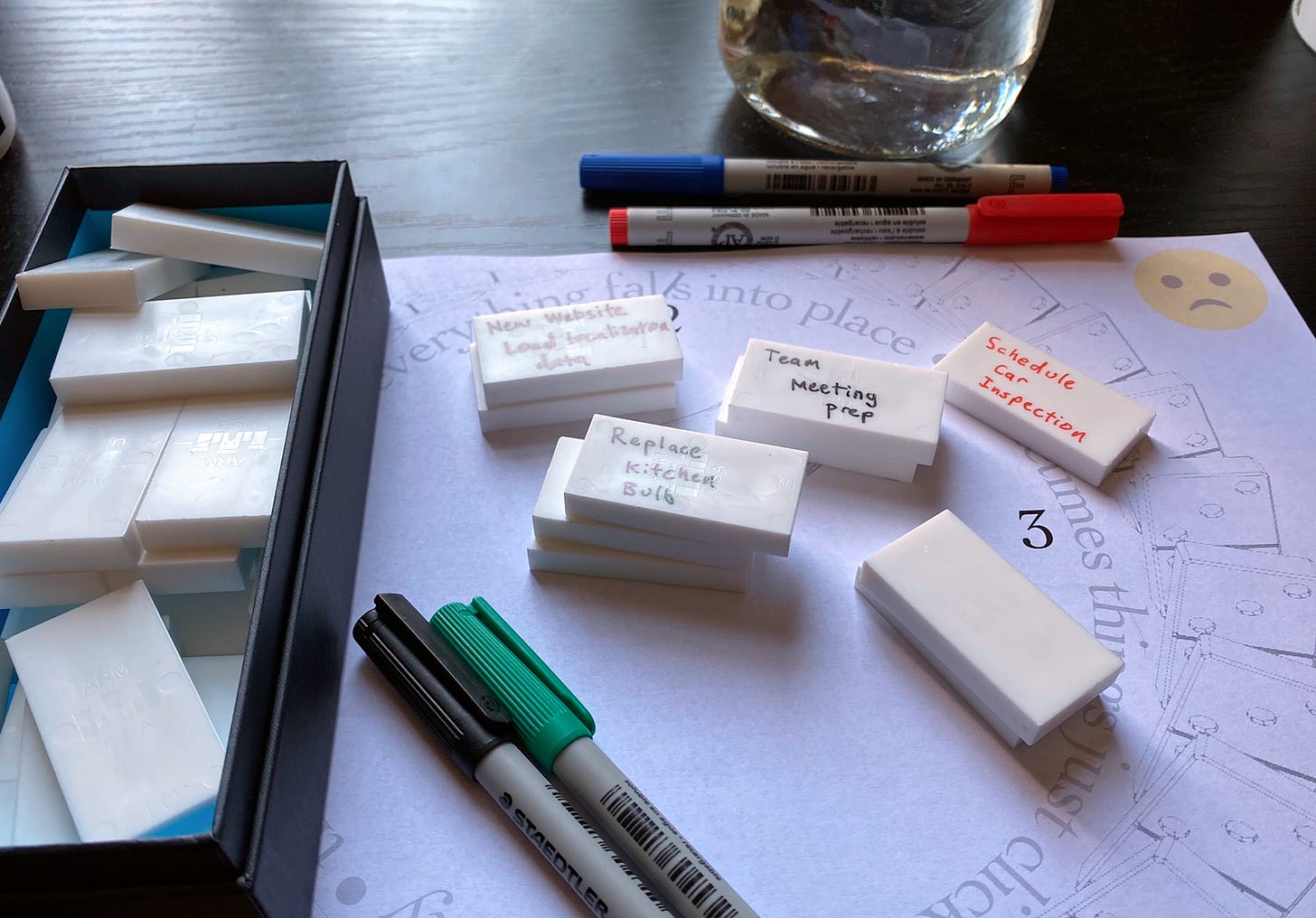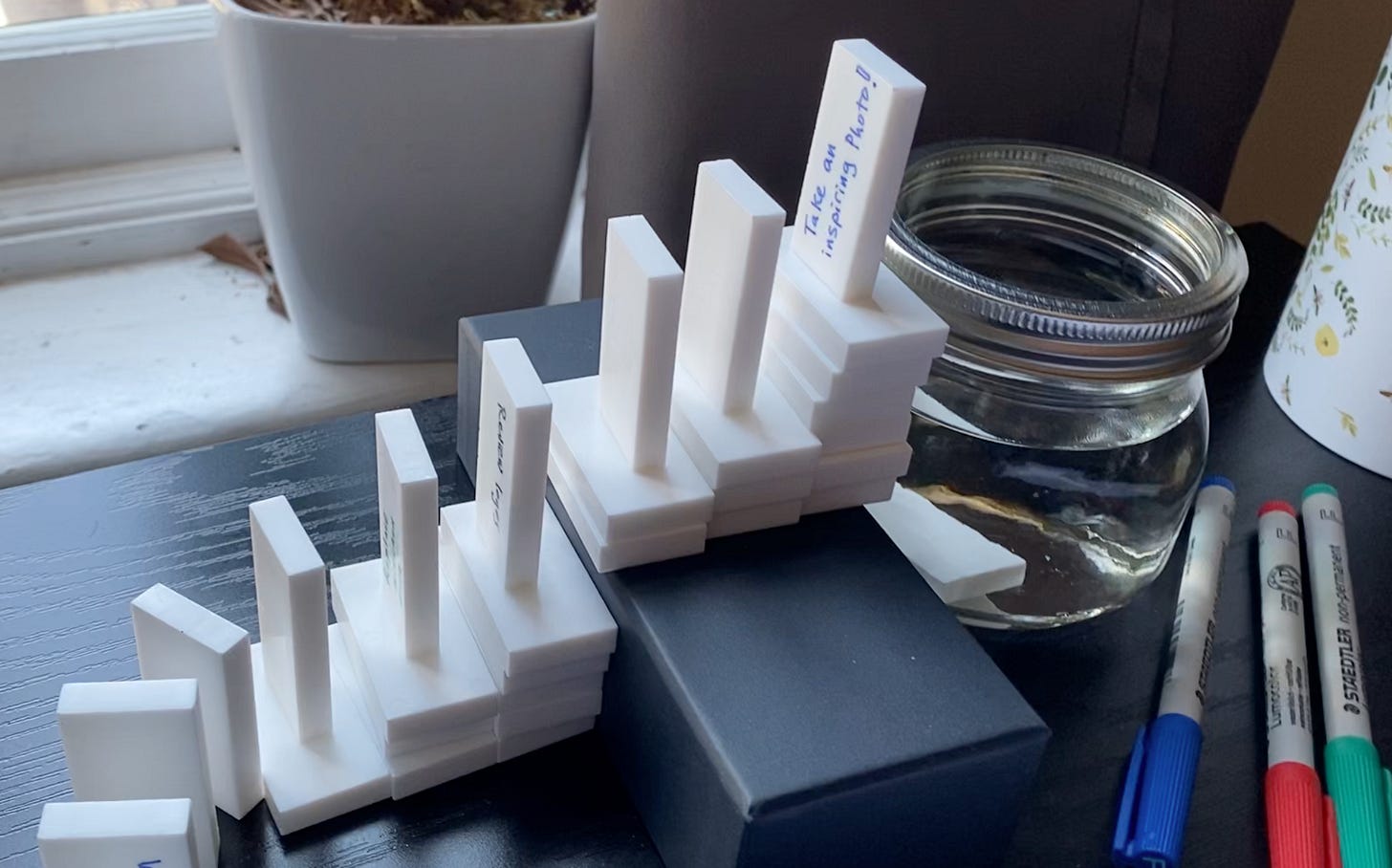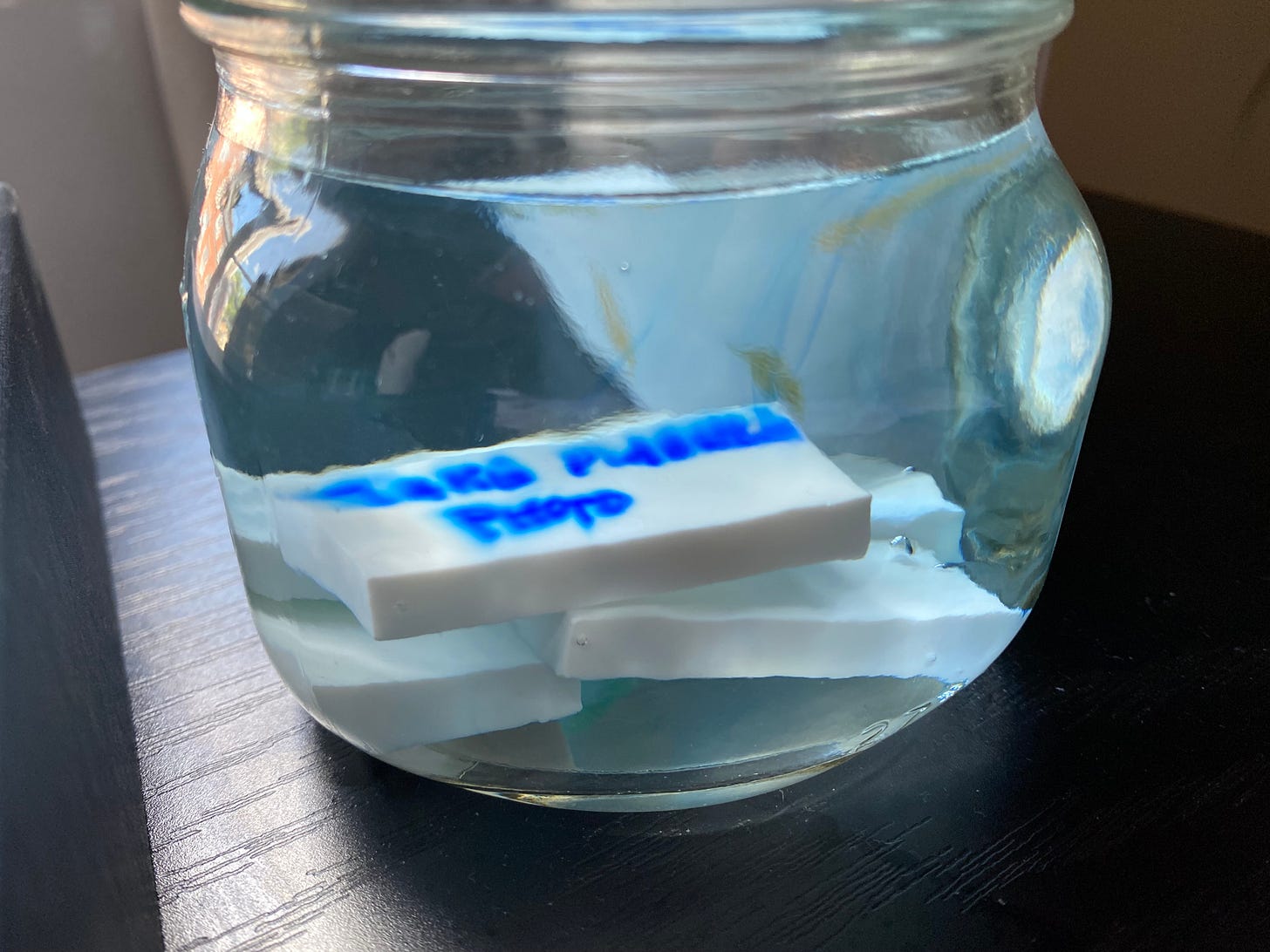TileMaker™ Pro Starter Guide
Not a blog about DIY kitchen backsplash projects
What is TileMaker?
TileMaker is a way to render time and tasks in a pleasing and functional tactile form. It is particularly useful for anyone who works from home, or needs to constantly juggle personal and professional commitments. It’s not a productivity app, a task manager, or a mind-mapping tool, but it will make you more productive, help you conquer tasks, and organize your ideas. It occupies the space between formal apps and chaos — a fun, frictionless, and satisfying companion to your day’s work.
What do I Need?
The essential tools of TileMaker are plain white dominos and fine-tipped wet erase markers.
Dominos: https://www.amazon.com/gp/product/B00M4ILHTO/
Note — these have a slightly embossed logo, but it doesn’t get in the way too badly. Still looking for a perfectly blank domino…
WET erase markers: https://www.amazon.com/gp/product/B0007OEDT8
Note — do not use DRY erase markers, as they will stain your tiles. Wet erase washes off beautifully.
A “done” jar for your completed tasks. I like a good mason jar
Think of your tiles like washable, heavy Post-its. They might be a quick reminder, or part of something structured, like a Kanban board. They might represent tasks, steps, ideas, characters in a story, or buttons on a web page.
But unlike Post-its, they are heavy. They make a sound like Star Trek money. You can sort them, stack them, flip them over, make a tower out of them. They will be there in a week or a year, and when they’ve served their purpose you can wash them off and start again.
How do I Start?
If there’s a dog-eared copy of Getting Things Done on your shelf, then you already understand the importance of tactile things. The moment you put your first note down on a plain white domino, your mind will already begin to see how this new tool fits into your workflow.
But if you aren’t a productivity nerd, or find yourself falling in and out of love with a new task management app every few weeks, then try this exercise in the morning, maybe on a day off or a weekend.
1. Capture
Take a dozen tiles and write down twelve internal commitments — things buzzing in your head that you care about making progress on. Don’t contextualize — that load of jeans in the wash is just as important as the vacation request you forgot to send HR. Keep each task small, doable in under 30 minutes. For big projects, just make a tile for the next task. “Throw out busted lawn chairs” is better than “clean the garage”. “20 minute character sketch” is better than “Start that novel”.
Again, not everything needs to be a task. If you’re doing this on a weekend, or you have flexible hours, “Go for a walk” and “Mets game” are perfectly reasonable tiles.
Play!
Once you have 12 tasks, stack them up. Shuffle them. Make a chain and knock them over. This is 6 hours of your life. Maybe the next 6 hours, maybe 6 hours spread out over a day or the whole weekend. Doesn’t matter. It’s a pile of the things that were running through your head and are now physically in your hand. You should feel lighter, more in control.
Plan
Draw a rough clock on a whiteboard or piece of paper (or print the one in this article). Pencil in any unmovable appointments you have today. Lay out your dominoes in the rest of the space. The first thing you’ll notice, if you’re using my printed clock, is you can’t quite fit two tiles in the space of an hour. Fortunately, TileMaker lets you adapt with minimal fuss. Feel free to turn your tiles sideways, stack smaller tasks, etc., but more often than not, there’s just never enough time. Give your internal commitments the space and time they deserve.
Do
Alright — playtime’s over. Start tackling that list! Ideally your first item is small, concrete, and easy, so you can get it done and enjoy that small hit of dopamine from a job well done. If your first item isn’t small, move your tiles around — flexibility is the point!
Done!
When you finish a task, drop it in a glass (or mason jar) of water. Watch the ink dissolve and think about how the weight of that task is now gone. Go tackle the next thing.
What did that do for me?
If you’re a tactile person who likes analog things, chances are some of this already “clicks". The ease of shuffling your tasks, the satisfaction of dropping them in the glass, the subtle, growing reminder of how much you’re getting done. But if you’re not quite convinced, here are some thoughts:
You didn’t need your phone or internet, and didn’t have to run the gauntlet of digital distractions to get to your tasks
You didn’t create ugly post-it clutter
You were able to reshuffle your list effortlessly and accommodate the things that interrupted your flow throughout the day
There was no pressure to separate personal and professional tiles
You experienced accomplishment in a satisfying tactile and visual way
You had an easy way to capture new tasks, with confidence that you wouldn’t lose track of them
OK, What Next?
The most important rule of TileMaker™ is to make it work for you. Other than using wet-erase markers, there are no hard and fast rules, so long as you keep it fun, frictionless, satisfying. So experiment and play! Here are some suggestions:
If you tried TileMaker on a day off, try it again on a work day, when you have more fixed appointments, more interruptions, more pressure.
Use a small whiteboard instead of paper for your daily Clock. Experiment with different layouts and styles — linear, arc, candy-land, etc.
Get fancy with your “done” jar. I use a mason jar with lights on it so I can watch the ink dissolve
No task is too small, especially when you’re having trouble getting motivated. “Open laptop” is a reasonable tile.
A task CAN be too big. Breaking down big projects into ~30 minute “next steps” is a great way to make forward progress.
You don’t need tiles for every part of a big project, especially if they already have a clear sequence. Just make a tile for the NEXT thing, and when that’s done, make a new tile. If a project has multiple parts that can be worked on independently, make tiles for whatever seems pressing.
You don’t need a tile for every commitment in your life — just the immediate stuff, or things that are on your mind, anything causing anxiety or happening today.
Don’t make tiles for appointments. Write those on your Clock.
If you can’t easily figure out how to break a project into 30 minute chunks, then make a tile called, “Break down project”.
Don’t let your tiles get too stagnant. It’s OK to wash them all on Sunday night and start over.
If you find a tile sitting around too long, ask yourself why. Does it need to be broken down? Scrapped? Or just rewritten? A lingering tile can tell you a lot about what’s going on with one of your internal commitments.
Don’t be afraid to mix personal and work tasks. You might not get to your personal tasks during the work day, but letting your tiles commingle relieves the anxiety of letting personal priorities slip while you’re at work.
We’ll look at all of the above and more in some detail in subsequent articles — stay tuned!








